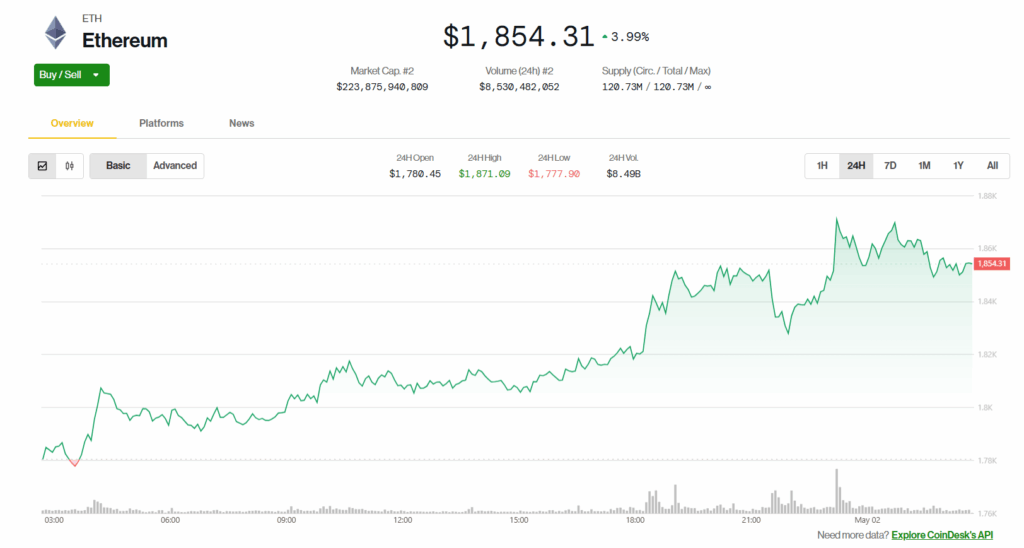- Ethereum’s upgrades like Pectra, Fusaka, and Glamsterdam aim to scale the network without losing decentralization.
- Vitalik Buterin is now focused on deep research into privacy, scalability, and next-gen architecture.
- The roadmap is packed with changes that boost speed, lower fees, and prep Ethereum for mass adoption.
Ethereum isn’t sitting around reminiscing about the Merge. It’s still evolving—faster than ever, actually. Every upgrade is a crucial move, not just some technical cleanup. These changes hit at the core: scaling, gas fees, onboarding struggles, and the fight to stay decentralized while everything else leans centralized.
Other blockchains? They’re getting slick. Faster transactions, smoother UX, lower fees. So yeah, Ethereum can’t afford to coast. It needs to keep sharpening both its execution layer and consensus game if it wants to stay at the heart of DeFi, NFTs, and whatever else Web3 throws our way next.
The roadmap isn’t just a to-do list
Ethereum’s roadmap has become more than just a set of updates. Think of it as a balancing act—one foot in the future, the other holding down decentralization. Upgrades like Pectra, Fusaka, and Glamsterdam aren’t just names on a dev calendar. They’re massive stress tests. Can Ethereum scale for the world without breaking what made it special?
Oh, by the way—since 2015, Ethereum has pulled off 16 major upgrades. The Merge (2022) flipped the network from proof-of-work to proof-of-stake, and before that, Altair (2021) laid the groundwork for sharding. Pretty wild when you think about it.
Vitalik Buterin is back in his element
In 2024, Vitalik stepped away from the day-to-day grind at the Ethereum Foundation and dove head-first into long-term research. His focus? Big-picture problems that don’t have easy answers—stuff like how Ethereum can serve billions of people, how to bake in real privacy, and how to keep decentralization alive in a world that’s becoming anything but.
Some of the ideas he’s chasing right now:
- New execution models that make Ethereum fast without giving up on security
- Native privacy tools like stealth addresses and built-in private transactions
- Rethinking how transactions are processed so Ethereum can actually scale
Also worth remembering: Vitalik pitched the idea for Ethereum back in 2013 when he was just 19. Yeah, that’s not a typo.
The 6-phase master plan
Ethereum’s long-term plan is broken into six big chunks, and each one solves a different piece of the blockchain puzzle.
- The Merge: goodbye PoW, hello PoS. Cleaner, greener, more secure.
- The Surge: scale through rollups and data availability (like EIP-4844).
- The Scourge: battle against MEV and centralization in staking.
- The Verge: bring in Verkle Trees and SNARK-based clients. Less data bloat.
- The Purge: prune old junk, reduce node load, and wipe technical debt.
- The Splurge: catch-all for upgrades like EOF and cryptographic polishing.
It’s kind of like Ethereum’s version of a full-system reboot… but in slow motion and open-source.
Pectra is up next (and it’s a big one)
Expected to drop in May 2025, Pectra combines two upgrade tracks: Prague (execution layer) and Electra (consensus layer). This upgrade brings in over a dozen EIPs and lays the foundation for the next generation of Ethereum use.
Here’s a taste of what’s coming:
- EIP-2537: adds BLS precompiles for better zk-rollup support
- EIP-7002: makes validator exits triggerable through the execution layer
- EIP-7702: brings account abstraction closer by letting EOAs act more like smart contracts
- EIP-7840: sets the stage for higher data throughput with blob scheduling
Pectra also introduces the Ethereum Object Format (EOF), which makes smart contracts more modular and easier to audit. That’s a big step toward features like gasless transactions and smart account wallets.
What happens after Pectra? Say hi to Fusaka and Glamsterdam
These two upgrades pick up where Pectra leaves off:
- Fusaka (short for Osaka-Fulu): introduces PeerDAS. Instead of downloading full blocks, nodes can sample small data chunks. That’s lighter, faster, and more scalable.
- Glamsterdam (a mashup of Amsterdam and G-Star): is focused on gas optimizations and general efficiency improvements. It’s still in early design, but it’s gonna matter—especially for complex apps like rollups and zero-knowledge tech.
Together, they keep Ethereum pushing toward a global-scale, layer-2-friendly future.
Vitalik’s next-level experiments
Vitalik’s not stopping at Glamsterdam. His latest research digs even deeper into what Ethereum could become:
- Exploring post-EVM ideas like using RISC-V, an open-source hardware standard, for better modularity
- Building Ethereum’s layer-2 backbone with better rollup integration and light client support
- Balancing decentralization and compliance in a world where regulation isn’t going away
These concepts probably won’t hit mainnet tomorrow—or even next year—but they could define Ethereum’s architecture for the 2030s.

Scaling, without selling out
The real mission behind all of this? Grow Ethereum to global scale without compromising its soul. And that’s not easy.
These upcoming upgrades—Pectra, Fusaka, Glamsterdam—aren’t just about making things faster. They’re about keeping Ethereum useful, affordable, and fair for the long haul. That means lower fees, stronger layer-2s, better UX, and deeper resistance to centralization.
So yeah, keep your eyes on May 7. But don’t stop there. Ethereum’s next phase is already in motion, and it’s not slowing down anytime soon. The road from the Merge to a fully modular, globally scalable network is only just starting to unfold.














